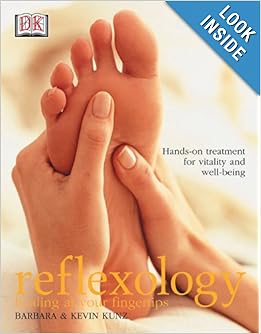 Warning: This is a long post, and I apologize in advance.
Warning: This is a long post, and I apologize in advance.
I am not normally one to to do gratuitous math. (I regularly joke that I married a Math major so I shouldn't have to do math.) But throughout 2013 I watched both online and in the projects I did at work as people of all stripes fussed and debated in circles about the apparent lack of women in leadership roles and what can or should be
done about it.
This was disturbing and frustrating to me, though it took me a very long time to determine and articulate why that was the case beyond my personal experiences which consistently demonstrate that women often suffer in leadership roles, regardless of how much they wanted to hold them or the amount of support being offered by others. What follows is the result of me finally figuring out why the whole discussion felt so wrong.
The Math Behind Women
in Leadership or Why the Idea that Women Should Hold 50% of Leadership
Positions Is Demographically Unrealistic
There is an ongoing debate in many circles about why there
appears to be a lack of women in leadership roles and what can or should be
done about it. Ideas range from pessimistic views about glass ceilings and
negative social perceptions of powerful or authoritative women to optimistic
arguments that it reflects women’s increasing empowerment to intentionally opt
out of workforce in favor of staying home with their families.
The statistics primarily
bandied about revolve around the number of CEOs, guest speakers, and other
model leaders in any given setting and how few of them are/were women. Conversations
and comment sections often rapidly devolve into circular or divisive debates,
and men (other than being considered, by default, part of the problem) are
usually left out of the issue almost entirely.
The more I have read and thought on the subject, however, the more the concept bothered me. It
started with the
awareness that (in my experience) many women, no matter how smart or capable, simply
don’t have the personality or desire to be good leaders. As a result, they either intentionally opt out of seeking leadership positions, or end up taking on a position in which the costs far outweigh the benefits. Moreover, like so many well-intentioned goals, it seemed that perhaps this debate was being warped and framed by measurements that didn't actually correspond to core intentions.
The key that brought everything together for me was remembering a fascinating fact
I’d read a while back: women account for a shockingly low percentage of INTJ’s (the
Mastermind Myers-Briggs personality), and that female ISTJ’s (another
personality type common among successful leaders) are also fairly rare.
Enter the gratuitous math: when I popped open a new excel
spreadsheet and started running the numbers, what I found reinforced my belief
that the popular opinion that women should account for 50% of individuals in
leadership roles is completely off base. Socio-political opinions aside, it’s simply demographically unrealistic.
Here's why:
As of the 2010 Census, there were just over 3 million people in the
United States. Of these, just over 1.9 million were between the ages of 18 and 65, giving us roughly
the number of people eligible to comprise the nation’s
workforce. Broken out by gender, there
are slightly more women (97,822,857) than men (96,473,230). At face value this
seems to support the idea that, opportunities being equal, we might reasonably
expect that at least 50% of leaders would be women.
However, neither the
skill/personality nor the desire to successfully fill a leadership role is
uniformly distributed throughout the population. Both historically and in modern studies, four Myers-Briggs personality types account for 57.8% of leaders*. When we take
this information into consideration, the picture changes dramatically.
As the chart below shows, only
slightly more than a quarter (26.1%) of adults fall into one of the four
primary leadership personalities. Moreover, even using the highest published
estimates, only a quarter (25.1%) of those
adults are women – which means that only
6.55% of women identify with one of
the four personality types that typically characterize almost 60% of leaders.
|
Personality
Type
|
%
of Leaders
|
Percentage
of the Pop.
|
Women
as a % of Type**
|
|
ISTJ
|
18.2%
|
6
|
7-10%
|
|
ESTJ
|
16%
|
13
|
6-8%
|
|
ENTJ
|
13.1%
|
5
|
1-4%
|
|
INTJ
|
10.5%
|
2.1
|
1-3%
|
|
Totals
|
57.8%
|
26.1%
|
25.1%
|
In real life, of course, a plethora of contributing factors influence
whether an individual will pursue (or remain in) a leadership role. Many of the
6.55% of women whose personalities predispose them to being strong leaders will
choose other careers to which they are also well suited and some will not participate
in the formal workforce at all, resulting in an even lower percentage of women
holding socially significant or highly visible leadership roles.
Obviously, women’s under-representation among the four personality types above will cause them to be more heavily represented
among other Myers-Briggs types. We might assume for the sake of argument, then,
that even accounting for those who are not participating in the workforce,
women may be more evenly represented among the remaining 42.2% of leaders.
Even if women comprised a full 50% of that 42.2%, they would
still only account for 21.1% of total leaders. And, even if all 6.55% of women
with the top four leadership personalities were in the workforce and employed
in leadership positions, women would still only account for 27.65% of
individuals in traditional, recognized leadership roles!
What does this mean for the ongoing debate about women in leadership?
First, I believe it would behoove us as a nation to reassess how we identify, train up, and support leaders of both genders. Leadership is a gift, and one that is desperately needed in many sectors. Many talented and capable individuals turn down or step down from leadership roles every year because the conditions of the position require too much sacrifice of other legitimate components of a balanced, fulfilling life such as family and health.
Second, we would benefit from being more concise and specific about what we are truly looking for when we claim to want more women leaders, and why. Is it a perceived lack of respect for behind-the-throne and feet-on-the-ground influencers and game changers? Is it a lack of access to role models, potential mentors, or others doing what we hope to accomplish and need guidance in? Is it a feeling that modern leadership leans to far into a certain paradigm of thinking or acting that we hope to balance out? Whatever the core of our need is, it may be entirely possible to meet it through ends and means eminently more practical, feasible, and effective than simply objectively boosting the number of women in traditional leadership roles.
Finally, I believe that we need to make a shift in the types of statistics we use to define and discuss our challenges. Single, large-scale statistics (such as the total percentage of females in traditional leadership positions) are hard to properly understand and apply out of context and are prone to accidentally warping the types of solutions and assessments proposed to address an issue (
as so recently demonstrated by the calorie reduction campaign). Using smaller, more specific measurements (such as the percentage of women in the church who feel that a lack of female presence/perspective in the sermons is a problem or the number of women in a specific career field who desire but are struggling with/unable to find a female qualified mentor) will prove vastly more effective in accurately shaping discussions and initiatives related to the issue and empower people to make good, informed choices.
Thank you for wading through this very long, but very heartfelt post!
*Please note that this
data reflects traditional leadership roles and does not account for “power
behind the throne” positions, informal leaders in a workplace/organization, or
leadership roles not traditionally recognized/accounted for (think Pastors’
wives, club officers, school board members, etc.)
** A few of these
numbers are much higher than other estimates; for example, women are reported
elsewhere to account for only 0.3% of INTJ’s. For the sake of this debate and
consistency in comparisons, however, I have used the higher numbers. In places
where a range is given, I have used the highest number in calculating totals,
presenting a best-case scenario.
 Author Tim Stafford brings readers
the stories of eleven scientists who have faced fierce battles reconciling
their faith with their careers. Battling both fellow believers and their
professional peers, these individuals present strong evidence that it is
possible both to fully embrace science and one’s faith even, and perhaps
especially, on subjects that have long been considered breaking points between
the two.
Author Tim Stafford brings readers
the stories of eleven scientists who have faced fierce battles reconciling
their faith with their careers. Battling both fellow believers and their
professional peers, these individuals present strong evidence that it is
possible both to fully embrace science and one’s faith even, and perhaps
especially, on subjects that have long been considered breaking points between
the two. 










